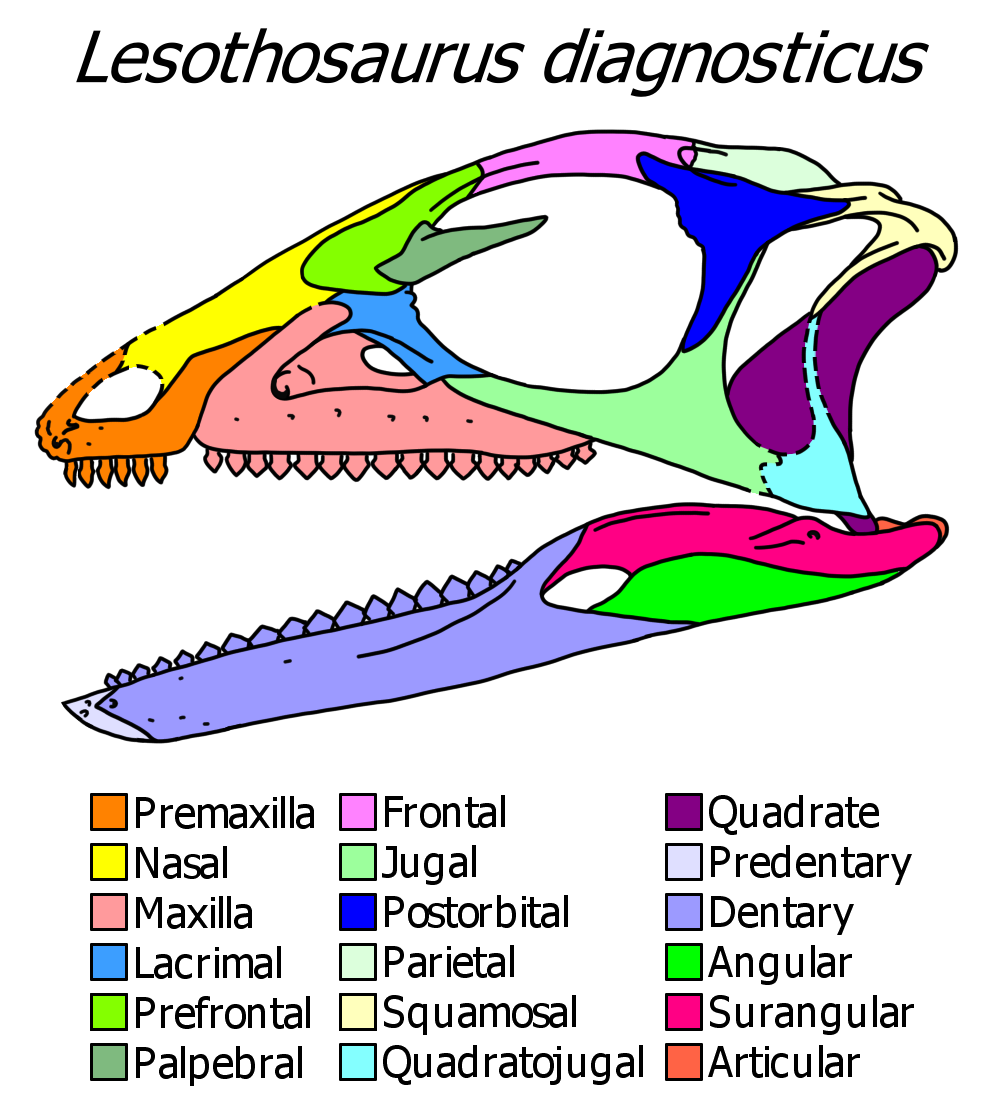|
Ornithischian Genera
Ornithischia () is an extinct clade of mainly herbivorous dinosaurs characterized by a pelvic structure superficially similar to that of birds. The name ''Ornithischia'', or "bird-hipped", reflects this similarity and is derived from the Greek stem ' (), meaning "bird", and ' (), meaning "hip". However, as theropod dinosaurs, birds are only distantly related to this group. Ornithischians with well known anatomical adaptations include the ceratopsians or "horn-faced" dinosaurs (e.g. ''Triceratops''), the pachycephalosaurs or "thick-headed" dinosaurs, the armored dinosaurs (Thyreophora) such as stegosaurs and ankylosaurs, and the ornithopods. There is strong evidence that certain groups of ornithischians lived in herds, often segregated by age group, with juveniles forming their own flocks separate from adults. Some were at least partially covered in filamentous (hair- or feather- like) pelts, and there is much debate over whether these filaments found in specimens of '' Tianyulong ... [...More Info...] [...Related Items...] OR: [Wikipedia] [Google] [Baidu] |
Early Jurassic
The Early Jurassic Epoch (geology), Epoch (in chronostratigraphy corresponding to the Lower Jurassic series (stratigraphy), Series) is the earliest of three epochs of the Jurassic Period. The Early Jurassic starts immediately after the Triassic–Jurassic extinction event, 201.3 Ma (million years ago), and ends at the start of the Middle Jurassic 174.7 ±0.8 Ma. Certain rocks of marine origin of this age in Europe are called "Lias Group, Lias" and that name was used for the period, as well, in 19th-century geology. In southern Germany rocks of this age are called Black Jurassic. Origin of the name Lias There are two possible origins for the name Lias: the first reason is it was taken by a geologist from an England, English quarryman's dialect pronunciation of the word "layers"; secondly, sloops from north Cornwall, Cornish ports such as Bude would sail across the Bristol Channel to the Vale of Glamorgan to load up with rock from coastal limestone quarries (lias and Carbonif ... [...More Info...] [...Related Items...] OR: [Wikipedia] [Google] [Baidu] |
Laosaurus
''Laosaurus'' (meaning "stone or fossil lizard") is a genus of neornithischian dinosaur. The type species, ''Laosaurus celer'', was first described by O.C. Marsh in 1878 from remains from the Oxfordian-Tithonian-age Upper Jurassic Morrison Formation of Wyoming. The validity of this genus is doubtful because it is based on fragmentary fossils. A second species from the Morrison Formation, ''L. gracilis'', and a species from the late Cretaceous Allison Formation of Alberta, Canada, ''Laosaurus minimus'', are also considered dubious. History and taxonomy Marsh (1878a) named his new genus from vertebrae ( YPM 1874) found by Samuel Wendell Williston at Como Bluff, Wyoming, from rocks of the Morrison Formation. The type material includes nine partial and two complete tail vertebral centra, which he concluded came from a " fox-sized" animal. In the same year, he named two other species: ''L. gracilis'', originally based on a back vertebral centrum, a tail vertebral centrum, a ... [...More Info...] [...Related Items...] OR: [Wikipedia] [Google] [Baidu] |
Lutungutali
''Lutungutali'' (meaning "high hip" in the Bemba language) is an extinct genus of silesaurid dinosauriform from the Middle Triassic of Zambia. The single type species of the genus is ''Lutungutali sitwensis''. ''Lutungutali'' was named in 2013 and described from a fossil specimen, holotype NHCC LB32, including hip bones and tail vertebrae. The specimen was collected in 2009 from the upper Ntawere Formation, which dates to the Anisian stage of the Middle Triassic. ''Lutungutali'' is the first known silesaurid from Zambia and, along with the Tanzanian silesaurid '' Asilisaurus'' and dinosauriform ''Nyasasaurus'', the oldest bird-line archosaur known from body fossils (i.e. parts of the skeleton). Description ''Lutungutali'' is known from parts of its pelvis and from four caudal vertebrae that make up the base of the tail. These bones represent one individual, although bones that may belong to ''Lutungutali'' representing eight other individuals were collected from the same fossi ... [...More Info...] [...Related Items...] OR: [Wikipedia] [Google] [Baidu] |
Kwanasaurus
''Kwanasaurus'' is an extinct genus of Silesauridae, silesaurid Dinosauromorpha, dinosauromorph reptiles from the Late Triassic of Colorado. It is known from a single species, ''Kwanasaurus williamparkeri''. ''Kwanasaurus'' had a deeper, stronger skull and greater specialization for herbivory compared to other silesaurids. It also possessed many unique characteristics of the snout, Ilium (bone), ilium, and lower part of the femur. It was described along with new specimens of ''Dromomeron'' from the Eagle Basin, the northernmost extent of the Chinle Formation. Discovery ''Kwanasaurus'' hails from Triassic deposits in the Eagle Basin surrounding the town of Eagle, Colorado. This area contains the most northern exposures of the Chinle Formation, which is famous for its Late Triassic fossils of dinosaurs and other reptiles. Tentative terrestrial reptile biostratigraphy estimates that the Eagle Basin fossils, which were preserved in red siltstone, belong to the Revueltian biozone of ... [...More Info...] [...Related Items...] OR: [Wikipedia] [Google] [Baidu] |



